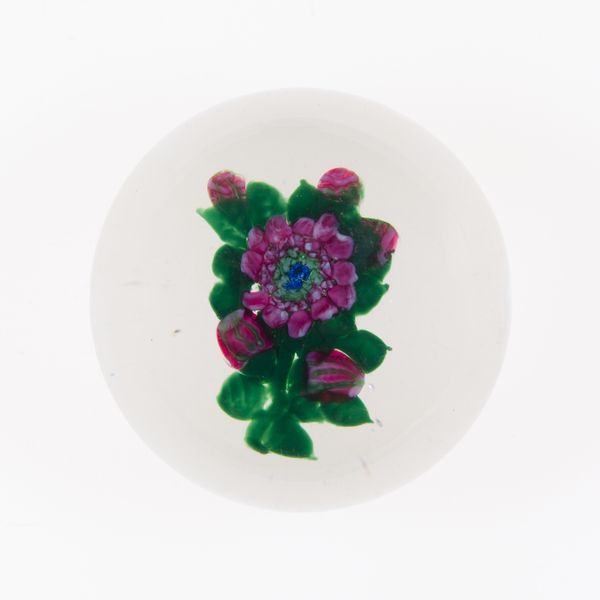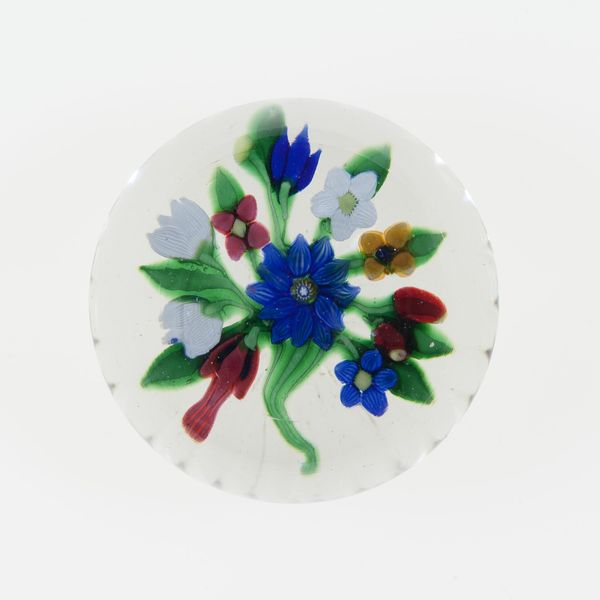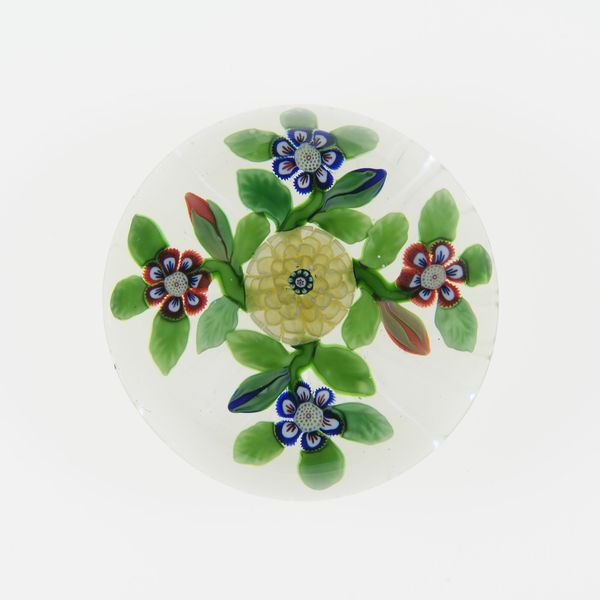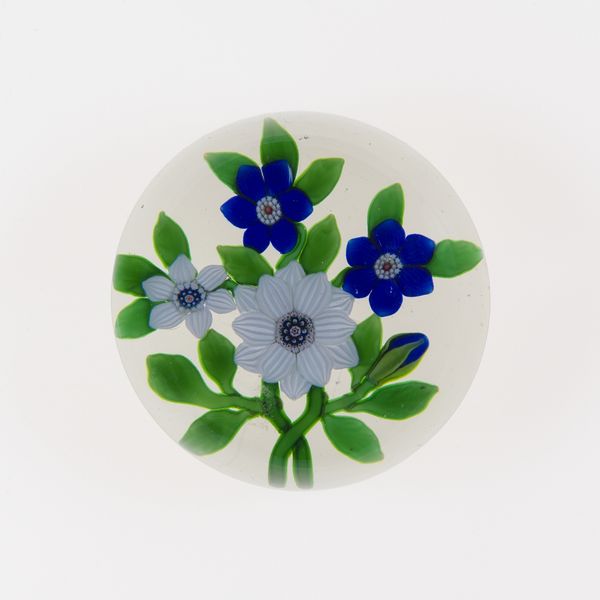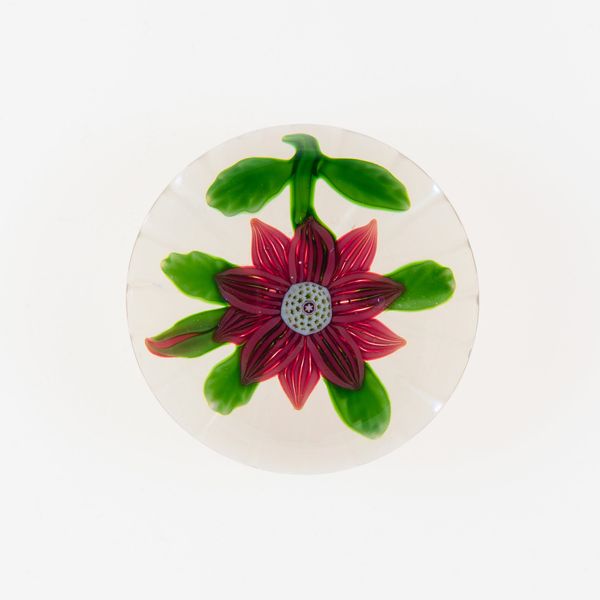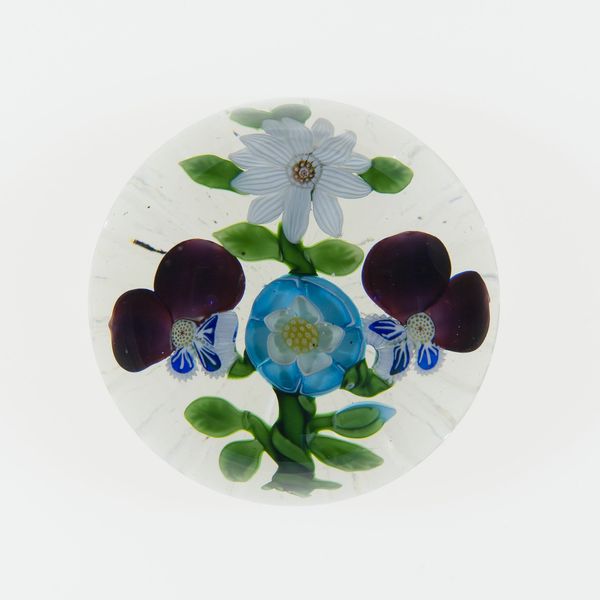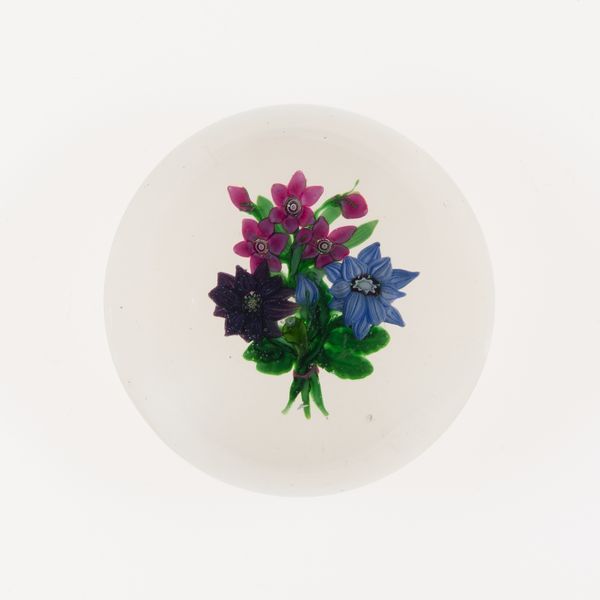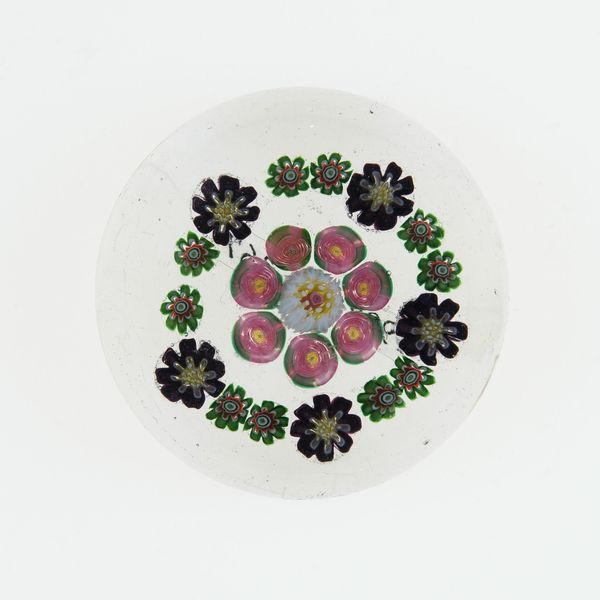
glass
#
glass
#
romanticism
#
decorative-art
Dimensions: Diam. 7.1 cm (2 13/16 in.)
Copyright: Public Domain
Curator: This charming little object is a glass paperweight, likely crafted by the Clichy Glasshouse sometime in the 19th century. Editor: It’s so delicate! Like capturing a fleeting spring blossom in a sphere of ice. The detail, despite its diminutive scale, is captivating. Curator: Absolutely. The form of the paperweight, of course, serves a practical function, but it's really a decorative object intended to elevate the everyday. Paperweights became popular as desk accessories as correspondence increased, becoming signifiers of class and education. They are symbolic objects tied to labor and domestic life. Editor: From a design perspective, I am struck by the contrast of the clear glass encasing this burst of color. It seems designed to stop the viewer. The meticulous arrangement of the lampworked flower within the glass creates depth, the way light refracts as it passes through the piece. It’s like a contained universe. How do the materials enhance this Romantic aesthetic? Curator: Well, glass as a material allowed for a mass production of an art object. While glasswork required significant skill, paperweights proliferated in middle class homes. It created an opening for Romantic appreciation in new settings beyond salon culture. This one evokes a sense of idealized nature, of course, with that vibrant flower, hinting at broader artistic themes accessible to a wider audience than painting. Editor: The colors certainly lean toward romanticism, and there’s something nostalgic about preserving the transient beauty of a flower in such a permanent form. I keep wanting to know what flower this evokes for people! Perhaps it’s intended to stir memory? It seems quite sentimental. Curator: Sentimentalism was, indeed, a key part of that era, an era of industrialization and alienation, and as the working class became aware of it, paperweights offered an antidote, domestic moments of beauty, crafted by fellow humans. These objects weren't just functional; they offered a quiet counter-narrative within the spaces of work and home. Editor: Seeing the floral elements trapped in the glass now gives me pause. It evokes a sense of melancholy, a beautiful yet controlled natural state, almost as a means to reflect human interaction with our surroundings. Curator: Precisely. A pocket sized moment of bucolic reflection from an era in transition. A permanent keepsake and relic.
Comments
No comments
Be the first to comment and join the conversation on the ultimate creative platform.
